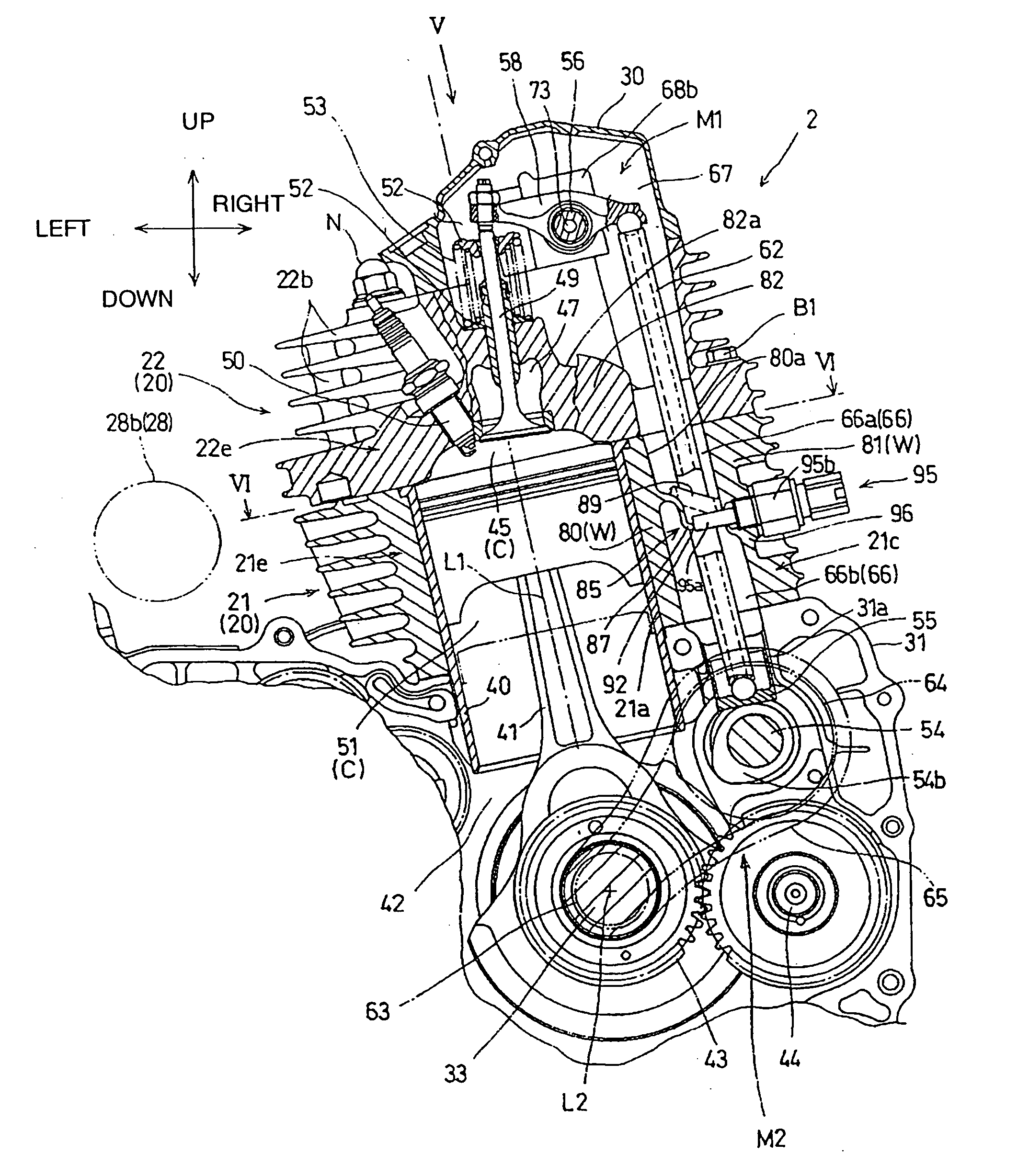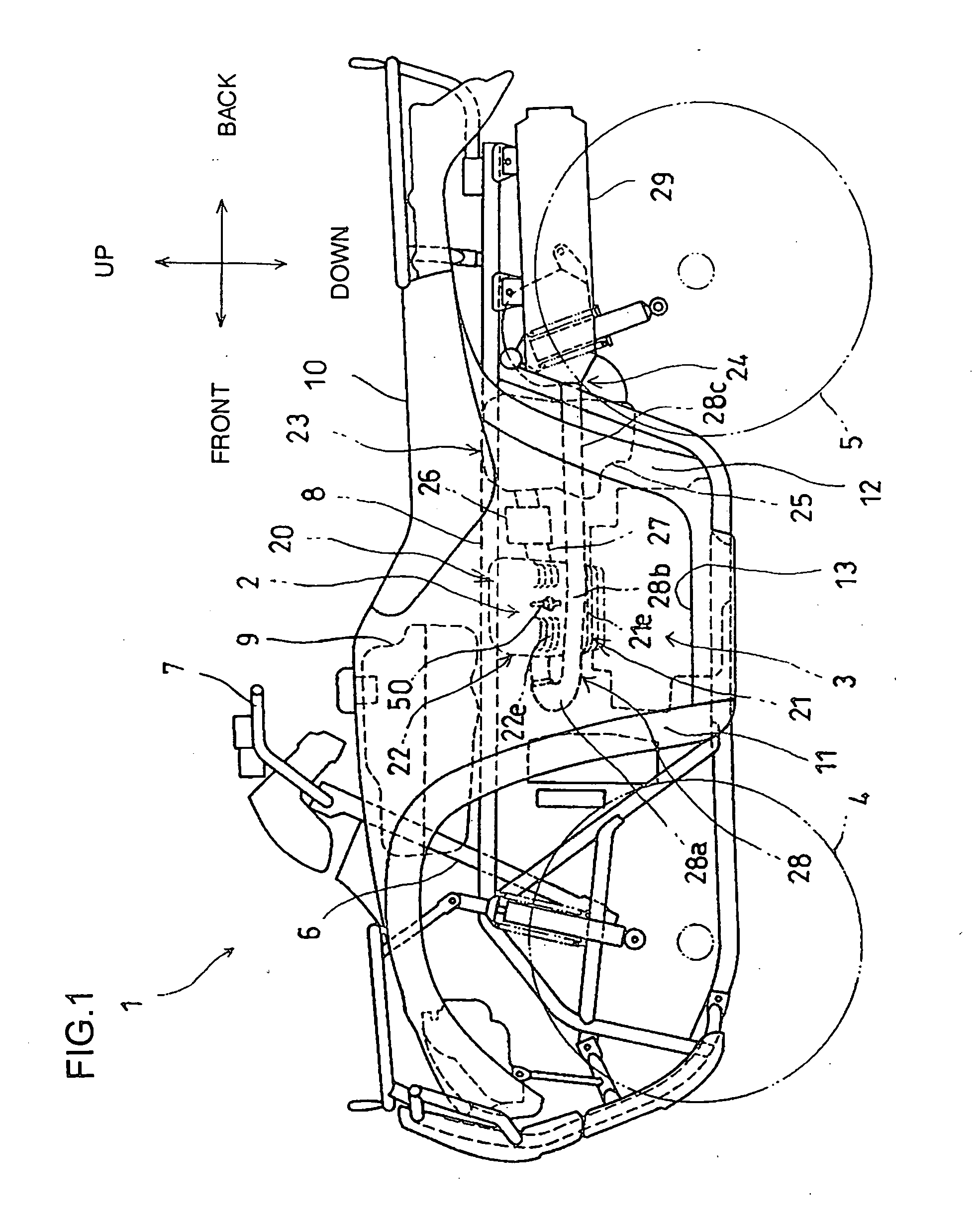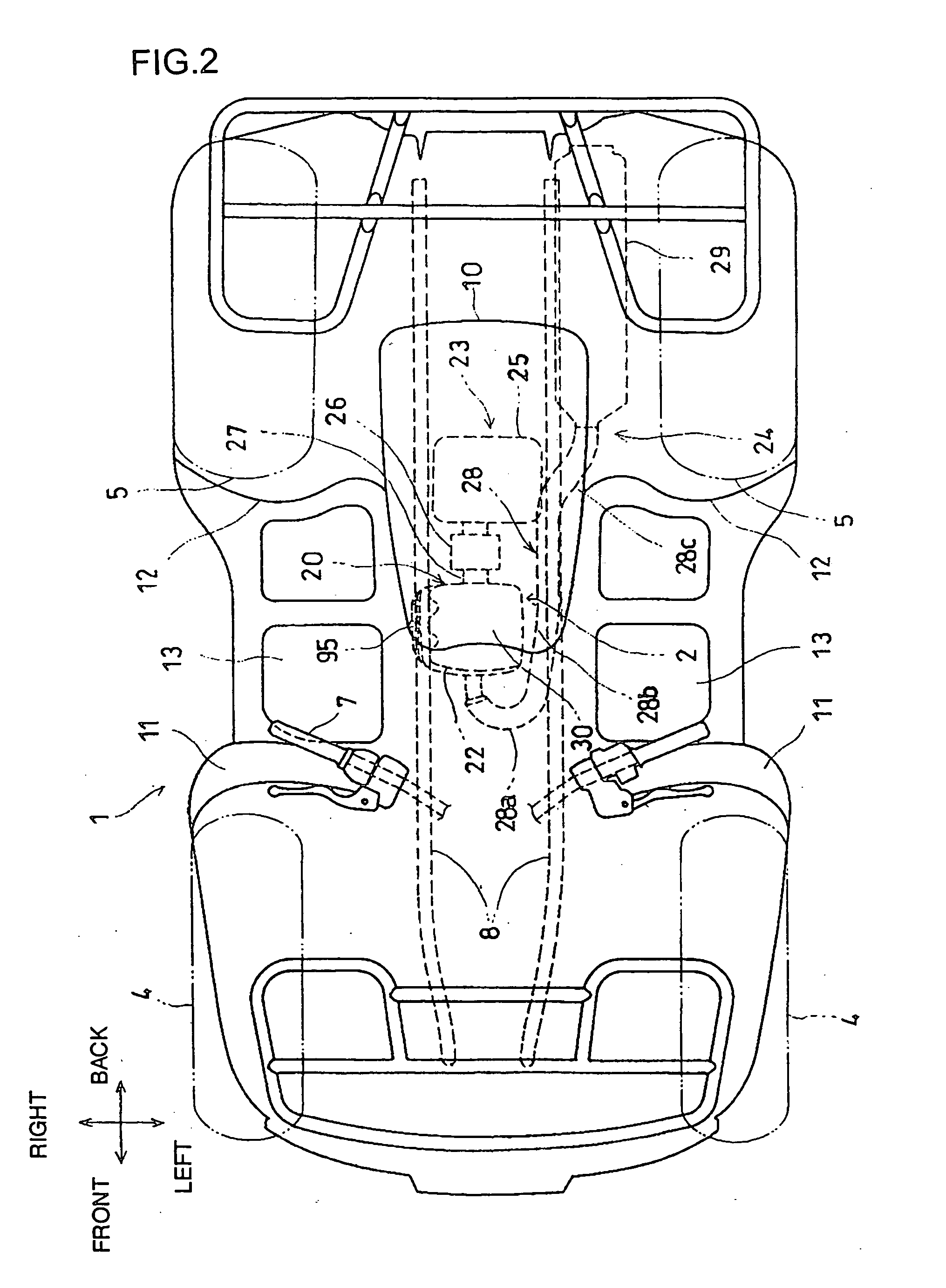Internal combustion engine with oil temperature sensor
a technology of oil temperature sensor and combustion engine, which is applied in the direction of machines/engines, mechanical equipment, crankcase compression engine lubrication, etc., can solve the problem of possibly restricted layout of temperature sensor, and achieve the effect of reducing the influence of thermal radiation from the exhaust pip
- Summary
- Abstract
- Description
- Claims
- Application Information
AI Technical Summary
Benefits of technology
Problems solved by technology
Method used
Image
Examples
Embodiment Construction
[0025] Hereinafter, with reference to FIGS. 1 to 7, the description will be made of an embodiment of the present invention.
[0026] Referring to FIGS. 1 and 2, an internal combustion engine 2 to which the present invention has been applied, is mounted on a saddle-ride type vehicle 1 capable of traveling on a uneven land. In a body frame of the vehicle 1, in the front portion thereof, there are installed a pair of left and right front wheels 4, in the rear portion thereof, a pair of left and right rear wheels 5, and in the intermediate portion thereof, a power unit composed of an internal combustion engine 2 and a transmission 3 respectively. Both front wheels 4 are steered by a handlebar 7 installed to the upper end portion of the handlebar post 6 via an interlocking mechanism (not shown) to be provided on the lower end portion side of the handlebar post 6. Also, the vehicle 1 is a four-wheel-drive vehicle, and both front wheels 4 and both rear wheels 5 are driven by a driving shaft ...
PUM
 Login to View More
Login to View More Abstract
Description
Claims
Application Information
 Login to View More
Login to View More - R&D
- Intellectual Property
- Life Sciences
- Materials
- Tech Scout
- Unparalleled Data Quality
- Higher Quality Content
- 60% Fewer Hallucinations
Browse by: Latest US Patents, China's latest patents, Technical Efficacy Thesaurus, Application Domain, Technology Topic, Popular Technical Reports.
© 2025 PatSnap. All rights reserved.Legal|Privacy policy|Modern Slavery Act Transparency Statement|Sitemap|About US| Contact US: help@patsnap.com



